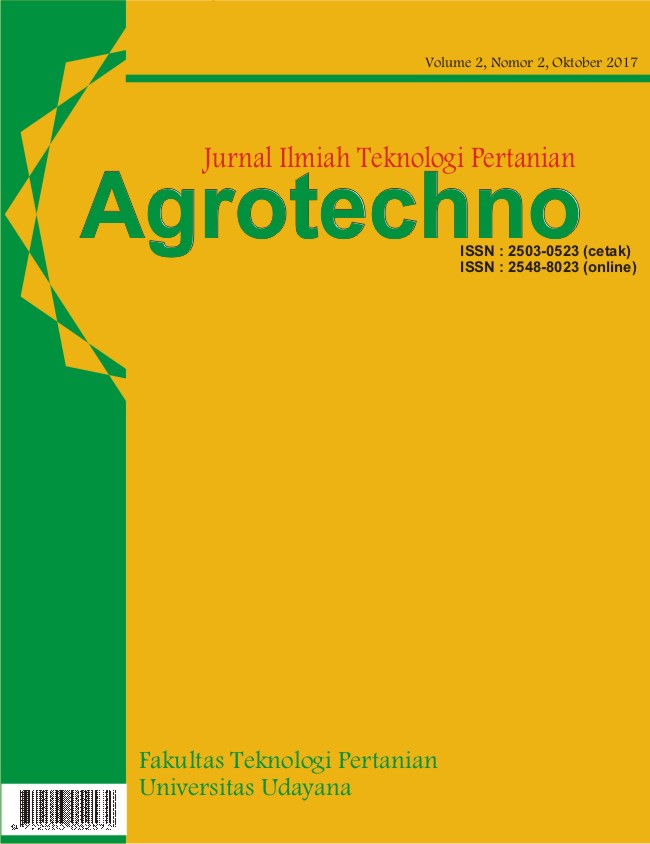Pemanfaatan Bekatul Jagung dan Ragi Cap Jago untuk Pembuatan Ragi Tempe dan Karakteristik Tempe yang Dihasilkan
Abstract
This study aims to determine the exact concentration of Cap Jago tempe yeast on corn bran substrate that is able to produce tempe yeast with the most total mold and to know the concentration of tempe yeast with corn bran substrate which produce tempe with the best characteristic. The study consisted of 2 step each of which used a complete randomized design. The first step is to addition concentration of Cap Jago tempe yeast are 5%, 10%, 15%, 20% and 25% with 3 replications to obtain 15 experimental units. The second step to applied selected inoculum with corn bran substrate on soybean with concentration 0.05%, 0.075%, 0.10%, 0.125% and 0.15%. Tempe that produced was tested by sensory evaluation. The best concentration determination based on the result of effectiveness index test. Tempe with the best sensory evaluation then analyzed. The result of research showed that the best concentration of Cap Jago tempe yeast was 20%. The best concentration of selected tempe yeast was 0.05% with criteria were yellowish white color, typical tempe aroma, typical tempe flavor, cohesive texture, water content 60.50% , ash content 1.02%, protein content 16.90%, fat content 20.23% and carbohydrate content 1.35%.
Downloads










